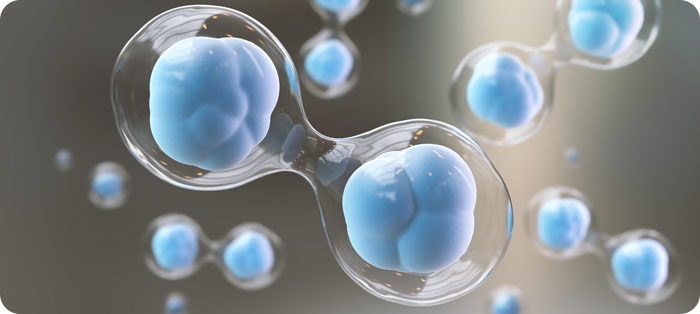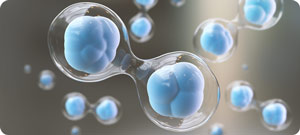Regenerative Medicine Specialist in Maui, Wailuku, HI
The goal of regenerative cell therapy is to start the body’s natural healing procedure and promote the growth of new, healthy tissue. This can be particularly useful in treating conditions that involve tissue damage or degeneration, such as arthritis, heart disease, or spinal cord injuries. Board-certified orthopedic surgeon Dr. Charles Soma, MD at NorthShore Orthopedics provides specialized and comprehensive care. For more information, contact us or book an appointment online. We are conveniently located at 1827 Wells St # 1, Wailuku, HI 96793.


Table of Contents:
What is regenerative cell therapy?
What is the success rate of regenerative therapy?
How is regenerative therapy done?
Regenerative cell therapy is a type of medical treatment that uses cells from a person’s own body to promote healing and regeneration. The therapy involves isolating and manipulating certain types of cells, such as stem cells or other types of progenitor cells, and then injecting them into the site of an injury or damaged tissue.
There are several different types of regenerative cell therapy, each of which involves different types of cells and techniques. For example, some types of therapy involve using stem cells that are obtained from a person’s bone marrow or fat tissue, while others use cells that are harvested from a person’s blood or other tissues.
Regenerative cell therapy is still a relatively new area of medicine, and there is ongoing research to determine the safety and efficacy of different types of therapy. However, early results have been promising, and many doctors and researchers believe that regenerative cell therapy has the potential to revolutionize the way we treat certain types of injuries and diseases.
The success rate of regenerative cell therapy can vary depending on the therapy being used and the condition being treated. Since regenerative cell therapy is still a relatively new field of medicine, there is limited data on the long-term outcomes of the therapy.
However, some earlier studies and clinical trials have shown promising results, specifically in the treatment of certain types of injuries and conditions. For example, regenerative cell therapy is effective in healing and reducing pain in people with osteoarthritis. It has also shown promise in the treatment of heart disease, spinal cord injuries, and other conditions.
It is important to note that regenerative cell therapy is still thought of as an experimental treatment in many cases, and more research is needed to fully understand how safe it is and its efficacy.
If you are considering regenerative cell therapy, it is important to speak with a good healthcare provider who can help you go over the benefits and risks of the treatment.
Regenerative cell therapy involves isolating and manipulating certain types of cells from a person’s own body and then injecting them into the site of an injury or damaged tissue. The specific process for regenerative cell therapy can change depending on the type of therapy and the condition being treated.
Here are the steps involved in regenerative cell therapy:
1. Harvesting Cells: The first step in regenerative cell therapy is to obtain a sample of the patient’s own cells. This may involve harvesting cells from the bone marrow, fat tissue, blood, or other tissues, depending on the type of therapy being used.
2. Isolating and Manipulating Cells: Once the cells have been harvested, they are isolated and then manipulated in a laboratory setting. This may involve separating out certain types of cells, such as stem cells or other progenitor cells, and then culturing them to increase their numbers.
3. Preparing the Injection: Once the cells have been manipulated, they are prepared for injection. This may involve mixing them with other substances, such as growth factors or matrix materials, to enhance their effectiveness.
4. Injection: The final step in regenerative cell therapy is to inject the cells into the site of the injury or damaged tissue. This may involve using different techniques such as ultrasound or MRI, to guide the injection and ensure that the cells are delivered to the appropriate location.
After the injection, the patient will typically be monitored closely to ensure that there are no allergic reactions or complications. Depending on the type of therapy being used, multiple injections may be required over weeks or months to achieve the desired results. Our dedicated team of specialists is ready to assist you and provide you with the personalized care you deserve. We serve patients from Maui, Wailuku HI, Lahaina HI, Kahului HI, Kihei HI, Wailuku HI, Kula HI, Makawao HI, Paia HI, Wailea HI, Haiku HI, and Waihee-Waiehu HI.

Additional Services You May Like
▸Fractures & Sprains
▸Knee & Shoulder Injury
▸Platelet Rich Plasma PRP
▸Hand Injury and Surgery
▸Sports Medicine
▸Arthritis Treatment
▸Athletic Injury Recovery
▸Direct Orthopedic Care for Fractures
▸Male Hormonal Evaluations
▸Strains and Sprains
▸Urgent Care
▸X-Ray
▸Worker Comp
▸Back and Neck Pain
▸Wound Management
▸Semaglutide
▸Regenerative Cell Therapy
▸Microneedling With Prp
▸Stem Cell Therapy
▸Knee Surgeon
▸Shoulder Orthopedic Surgeon

Additional Services You May Like
▸Fractures & Sprains
▸Knee & Shoulder Injury
▸Platelet Rich Plasma PRP
▸Hand Injury and Surgery
▸Sports Medicine
▸Arthritis Treatment
▸Athletic Injury Recovery
▸Direct Orthopedic Care for Fractures
▸Male Hormonal Evaluations
▸Strains and Sprains
▸Urgent Care
▸X-Ray
▸Worker Comp
▸Back and Neck Pain
▸Wound Management
▸Semaglutide
▸Regenerative Cell Therapy
▸Microneedling With Prp
▸Stem Cell Therapy
▸Knee Surgeon
▸Shoulder Orthopedic Surgeon





